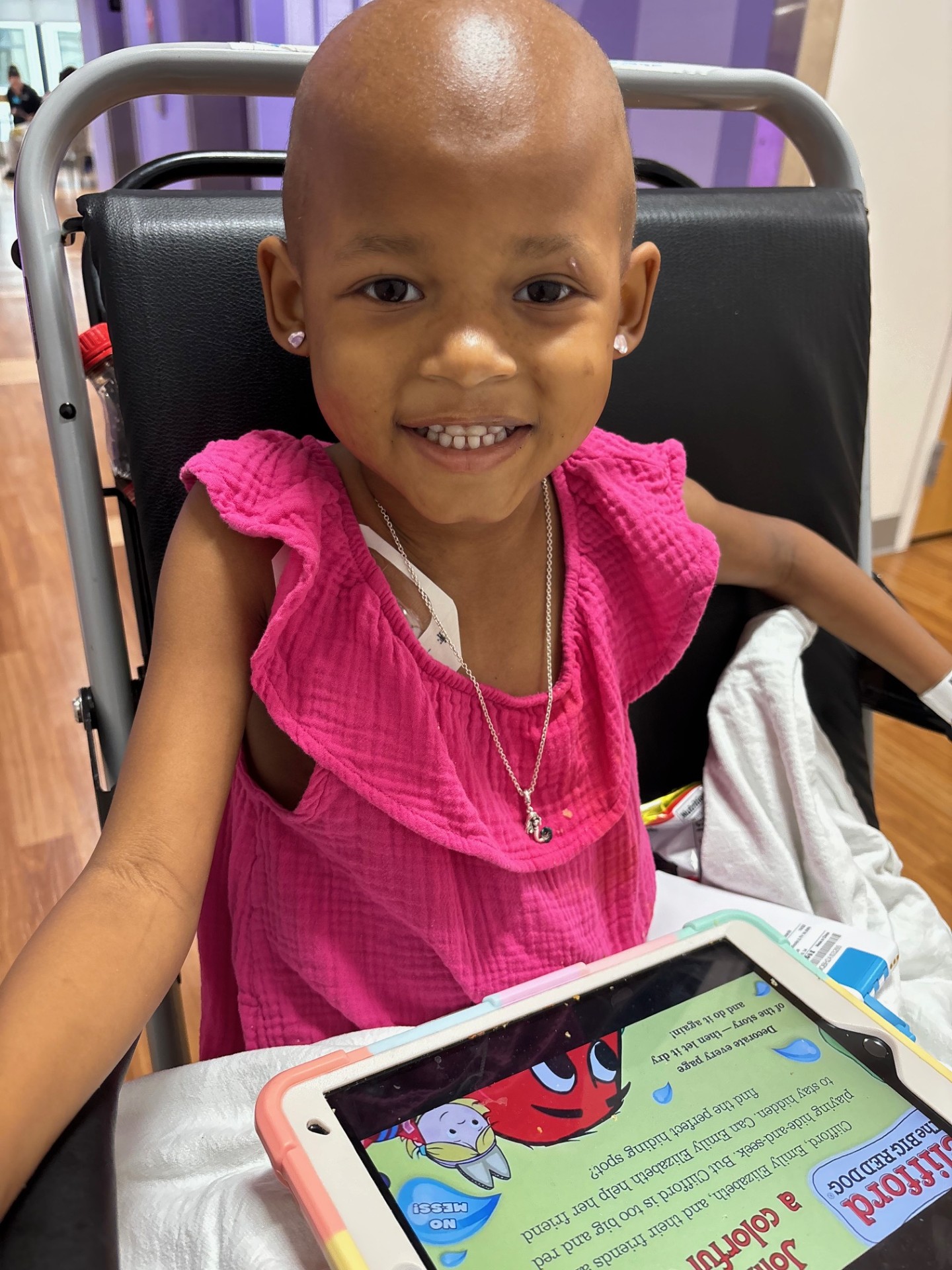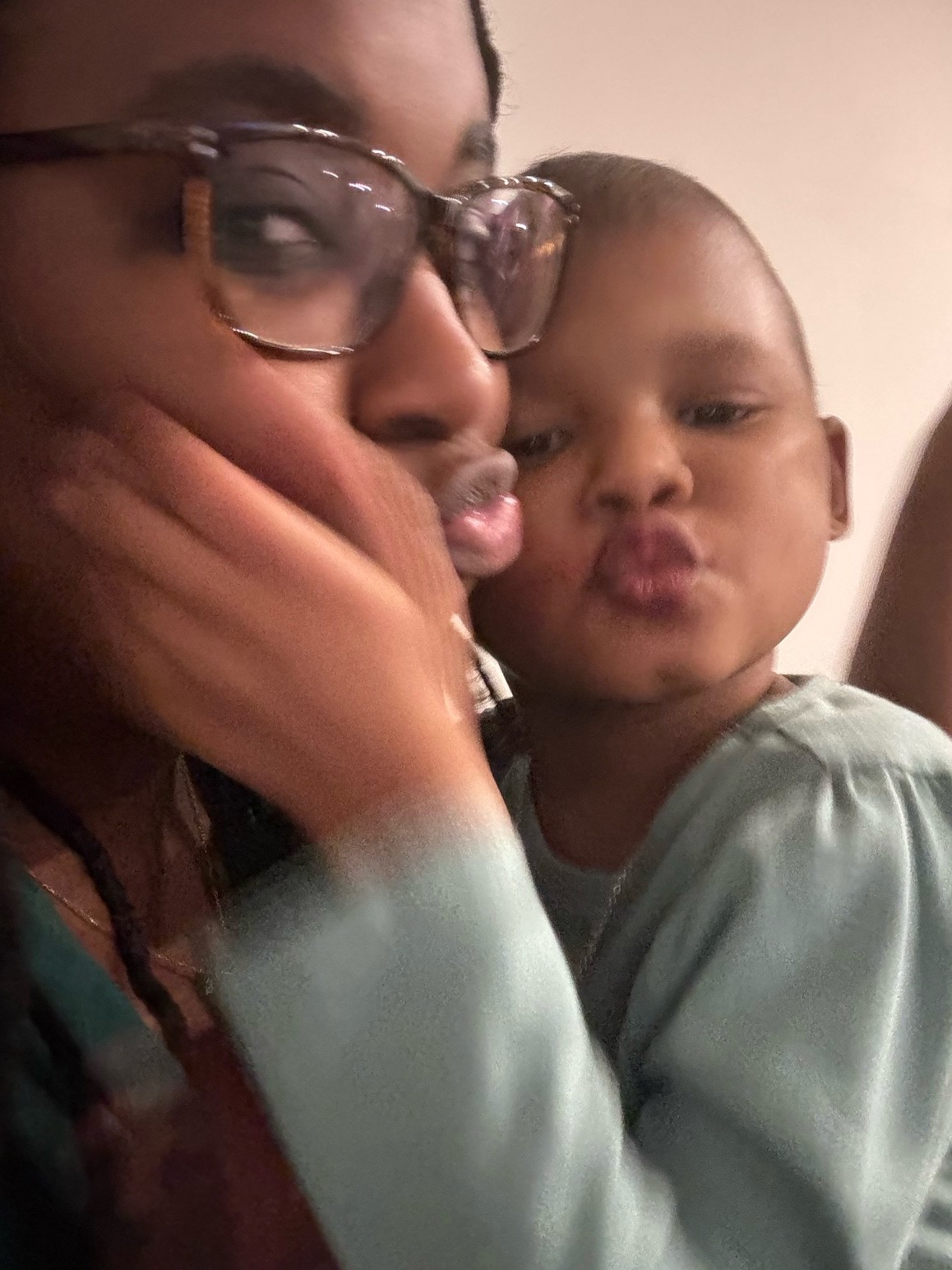Avery Mullen’s story: A brave warrior's journey through childhood leukemia
- Category: Patient Stories
- Posted on:
[2].jpg)
Meet Avery Mullen, a vibrant and bubbly child who lights up every room she enters. You wouldn’t guess it from her infectious laughter and endless enthusiasm, but at just 5 years old, Avery has been fighting childhood leukemia with incredible resilience and courage.
“She is a true warrior in every sense of the word,” said her parents, Alicia and Archie Mullen.
Before Avery’s diagnosis, she was the picture of health who loved eating peanut butter and jelly sandwiches, playing dress-up, experimenting with makeup, and styling her hair. Art was her passion, and she spent hours painting and coloring in her books. Avery's personality stood out, particularly next to her twin sister Ari, who is more of an outdoorsy type. 
When Avery turned four years old, her family's life took an unexpected turn. Despite showing no clear signs of illness, a subtle shift in her behavior caught the attention of her mother, Alicia, prompting her to seek medical advice.
"It was strange; there weren't many symptoms, except for her increased need for sleep," Alicia recounted. "Avery, who usually stays up late, started napping during the day, which was out of character. Then, she refused to eat her favorite snack, peanut butter and jelly sandwiches, for two consecutive days. When I couldn't get an appointment with her pediatrician for three weeks, I decided it was best to err on the side of caution. So, I took her to the emergency room at Children’s Hospital New Orleans."
Blood work revealed a diagnosis that no parent ever wants to hear: Acute Lymphoblastic Leukemia (ALL). ALL is a type of childhood cancer that affects the white blood cells, specifically the lymphocytes. It is characterized by the rapid proliferation of immature lymphoblasts in the bone marrow, which crowds out normal blood cells and decreases the production of white blood cells, red blood cells, and platelets.
“It was the hardest news to hear,” said Alicia. “It caught me off guard. I was a little bit in denial because she basically looked fine. She was admitted that evening, and by Sunday morning, I noticed her lymph nodes in her neck were swollen, and she was having a hard time walking. Things just escalated quickly.”
The news was a complete shock to Avery’s parents, who struggled to come to terms with their daughter’s diagnosis. However, amid the overwhelming fear and uncertainty, they found comfort in the expertise and compassionate care provided by her oncology and hematology team, Dr. Justin Farge and Dr. Zachary LeBlanc. Their expertise and support offered hope to the family during such a challenging time. 
"They informed me that ALL is a relatively common type of cancer in children and often has a high success rate," Alicia recounted. "When we arrived at the emergency room, Dr. Farge, the oncologist on call, gave us Avery’s diagnosis. We also met Dr. Farge’s fellow who had battled the exact same cancer when he was two years old. It was incredibly comforting and inspiring to hear his story. When you're confronted with your 4-year-old having cancer, seeing someone who not only survived it but is now helping children in their journey, gave us hope and reassurance."
After Avery’s diagnosis, Dr. LeBlanc, Avery’s primary oncologist, outlined the treatment plan to the Mullen family.
Chemotherapy is the primary treatment for patients diagnosed with ALL. Throughout Avery's cancer treatment journey, she underwent a series of different chemotherapy medications, carefully selected to target cancer cells at various stages of their growth cycle, with the aim of achieving remission.
"Chemotherapy tackles cancer cells at different stages of growth,” explained Dr. LeBlanc. “For Avery, we used a combination of drugs and additional medications to boost the chance of wiping out all the cancer cells. Timing is key—we give each drug when it's most effective in the treatment phase and cell cycle. By using multiple drugs together, we lower the risk of leukemia cells getting resistant to any one particular drug."
Avery's treatment journey began immediately on July 26, 2023, starting with the intensive induction phase. For a month, she was hospitalized at Children’s Hospital where she endured rigorous rounds of chemotherapy administered through the port on her chest. Concurrently, she had steroid treatment. 
"The steroids had a significant impact on her demeanor and appetite,” recalled Alicia. “Avery became irritable. She withdrew socially during this phase. I believe the induction phase was the most challenging for us because we saw the visible changes in her mood, eating habits, and weight. It was frightening to see how much she physically changed during our extended stay in the hospital. She was losing weight and had little appetite. Compared to her identical twin sister, who was thriving, active, and had a healthy appetite, it was heartbreaking to see Avery extremely fragile and delicate. We knew she was a fighter.”
As months passed, Avery's strength and determination remained strong. After completing the induction phase, the next step required her to come in frequently for outpatient treatments. She took chemotherapy pills at home and received IV chemotherapy at the hospital. Despite the hardships, she responded well to treatment, entering remission just four weeks after starting chemotherapy. However, she still needed to continue with the treatments to prevent a potential relapse.
“The hospital was a 45-minute drive from our home, and we kept this routine for two months,” said Alicia. “The side effects of the treatment were tough on Avery, so we paused her schooling temporarily for her recovery. I constantly reassured Avery, ‘Even though you don’t feel well, trust the doctors and nurses. They are helping you feel better.’ The caring support from the staff comforted Avery greatly.”
Avery received support from the Child Life staff during her treatment. Amy, a member of the Child Life team, created a personalized coloring book and arranged a paint exercise to help Avery understand her condition: ‘This is your blood, and there are bad things in it, but this medication will cleanse it.’ Despite feeling scared, Avery found comfort from family and the hospital staff, which motivated her to persevere.
As Avery approaches her sixth birthday, she has reached the halfway mark of her journey.The intensive phase of her treatment is behind her, and she is now in the maintenance phase. The anticipated date for her final treatment is November 2025, marking the long-awaited opportunity to ring the end-of-treatment bell. 
“We are eagerly anticipating that day,” said Alicia. “Avery is doing great right now. My husband and I are thankful to her incredible team, including Dr. Farge, Dr. LeBlanc, the nurses, Child Life, and everyone else who has been a part of Avery's journey. It takes truly exceptional individuals to care for such sick children daily and still radiate positivity. You can genuinely sense their passion and dedication to what they do."
For Alicia and her family, the journey has tested their strength and faith. Their uplifting message to other families facing similar challenges with childhood cancer is one of hope and resilience.
“It truly takes a village,” said Alicia. “It’s important to lean on the support of others, accepting help with humility and gratitude. Not everyone has family or friends nearby, but you’ll encounter supportive individuals along the way. When you find someone willing to help, accept it. Set aside pride and financial worries. Focus on your child and family, allowing your support network to lift you up. They can provide the strength needed to overcome even the greatest of obstacles. That’s what carried us through.”
For more information about the Oncology and Hematology Program at Children’s Hospital visit here:
Hematology & Oncology | Children's Hospital New Orleans (chnola.org)



